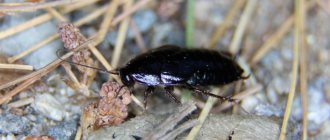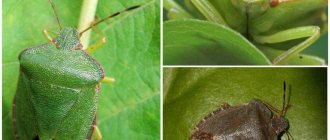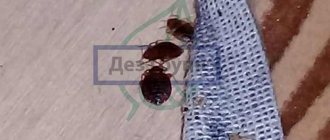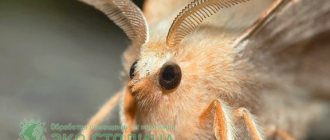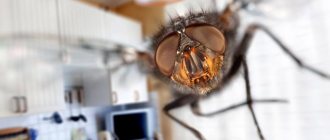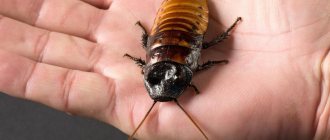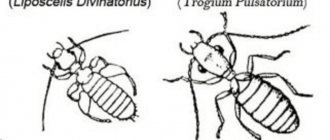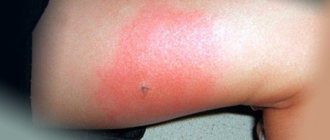- By Vil Malinoshevsky
- About cockroaches
If you sometimes find white cockroaches in your apartment, then you should be no more afraid of them than other living insects. They differ from ordinary cockroaches only in color. In addition, within a few hours they will no longer be white and will become the same as the rest of their relatives.
At the same time, the appearance of white cockroaches at home is still a bad signal for owners . If they appear, it means that you need to treat the apartment as soon as possible and try to destroy them.
White cockroaches in the apartment: who are they and where do they come from?
Is the white cockroach an albino cockroach? First, it's important to note that these are two different cases. As common as white cockroaches are, there has never been a documented case of an albino cockroach, at least not one that would fit the definition of albinism.
According to entomologists, albinism is a genetic condition that affects the body's ability to produce enough of the pigment melanin, the material that gives color to human skin, hair and eyes, or the color of an insect's shell. There are many levels of albinism, and it does not always result in noticeable depigmentation of the skin and hair, but it almost always affects vision.
Accurate diagnosis is not reliable by observing skin color. Instead, it is usually diagnosed by a simple eye color test. But don't open a cockroach inspection center just yet. Albinism is not a genetic disorder that appears to affect cockroaches. In other words, when it comes to the white cockroach, albinism is not the cause.
What harm do white cockroaches cause?
Like insects that have the usual brown color, colorless individuals act as carriers of infections, which can lead to the development of intestinal diseases. White cockroaches contain an abundance of small villi on their bodies, where countless bacteria, helminth eggs, and spores of pathogenic fungi settle. Traveling through sewers and garbage chutes, small pests collect pathogenic cocci, colitis, and enteritis on their surface. These infections can affect the human body when consuming food that the insect has come into contact with.
How cockroaches turn white
Where do white cockroaches come from? The real reason for white cockroaches is that when cockroaches molt, they not only lose their outer shell, but they also lose a lot of the pigmentation in their bodies, which then needs to be replaced. This is a chemical reaction that occurs in the body and usually takes several hours to completely restore pigmentation. Pigmentation not only colors their bodies, it can affect their circadian rhythms, or biological clocks, according to research into their neural organization. If you come across small cockroaches with transparent wings, these are baby cockroaches.
How to deal with them?
There are many insecticides in the form of powders, gels, sprays, and traps to combat parasites. They are relevant for cockroaches of any color.
Boric acid
An accessible, inexpensive, effective way to get rid of cockroaches, including white ones, is boric acid. It is almost harmless to humans, but has a detrimental effect on insects. White powder is affordable and sold in pharmacies. Its advantage is that it has a detrimental effect on the Prussian esophagus, nervous system, and paralyzes them. Although parasite populations can adapt to many insecticide ingredients, boric acid is not addictive. Disadvantages include long processing times. It will take one to two weeks for the insects to completely disappear.
Boric acid is used in three types:
- alcohol;
- powdery;
- food bait.
It is recommended to wipe countertops and taps with an alcohol solution. It is less effective than bait powder. There is a connection between insects; they notify each other of possible danger. The smell of alcohol scares them.
Note. Before using boric acid powder, study the places of accumulation and movement patterns of cockroaches. In these places the powder is scattered in a continuous path.
Traps are made in two ways:
- Water solution. First, you need to thoroughly wipe all surfaces so that there is no accumulation of water. Then dilute the bag of powder in water. Pour it into a shallow bowl. They are placed in places where Prussians gather, on paths.
- Making traps. To do this, you need to boil an egg and 1 potato tuber. Mash them to a puree-like state. Add a packet of boric acid, mix thoroughly, roll into small balls. Place bait in places where cockroaches gather.
5 recipes with boric acid for cockroaches
The use of boric acid is a simple, time-tested method of fighting cockroaches, including white cockroaches during the molting period.
Sprays and aerosols
The principle of operation is based on spraying insecticides under the influence of pressure in a can, using a built-in pump.
When working with such products, use the following precautions:
- The room is prepared before treatment. All food items are removed and pets are isolated. If there is an aquarium, temporarily turn off the compressor and cover it with a cloth. At the time of work, windows and doors must be closed.
- Use protective equipment: gloves, a cap on the head, a respirator or gauze bandage, preferably safety glasses. Most aerosols do not cause harm to humans, but in high concentrations they are toxic and cause unwanted side effects.
- Anti-cockroach medications are sprayed only at positive temperatures (more than 10⁰ C).
- They try to process the maximum area of the room, including upper shelves, communication niches, and ventilation ducts. It is better to dismantle the baseboard, this is where white cockroaches hide when they molt.
Advice! It is advisable that the processing be carried out by one person. After spraying the drugs, leave the room and leave it closed for several hours. Before sanitizing, you need to read the instructions for the specific drug in detail.
"Dichlorvos", "Dichlorvos Neo"
Proven product from Russian manufacturers. The advantage of Dichlorvos Neo is that it has no characteristic odor.
Effect on cockroaches: nerve agent.
Main active ingredient (EAI): "Dichlorvos" - organophosphorus ingredients (phosphorus + carbon), "Dichlorvos Neo" - peritroids.
Validity: up to two weeks.
Spray "Combat"
Russian spray, manufactured under German license. An additional property is an antiseptic. Advantage: large processing area (more than 60 sq. m).
Impact: contact, affects the food tract of insects.
EDV: imiprotrin, ciferothrin.
"Baron"
Russian remedy for deep impact. Overcomes the protective barrier of the chitinous shell of the cockroach. The disadvantage is the high price.
Impact: nerve paralytic.
EFA: finpronil (3%).
"Raid"
Manufacturer: Russia. The advantage is a prolonged action (up to three months).
EDV: a combination of poisons of the peritroid group.
The effect on cockroaches is combined: nerve-paralytic, contact. It affects white individuals during the period of change of the chitinous shell.
"Raptor"
Manufacturer: China. Transmitted by contact.
EDV: combination of poisons (tetramethrin, peronyl butoxide, cypermethrin).
Impact: affects the nervous, digestive and respiratory systems of insects.
Gels
The main form of packaging is a syringe, a sealed tube with a dispenser. Toxic substances are contained in the amount of 2–3% by weight. Works like bait. Contains substances that attract cockroaches (attractants). The composition includes fat-containing, culinary, synthetic ingredients. Some preparations contain special bitters to repel pets.
Advantages of gel insecticides:
- Most of the drugs are odorless. Does not enter the respiratory tract of humans or animals.
- The syringe is easy to use and reaches hard-to-reach places.
- The gel does not spread throughout the room, compared to powder products.
- Economical consumption.
Apply in two ways. The bait is squeezed onto paper and placed in places where insects accumulate. Dotwise (distance from 2 to 5 cm), apply to paths, squeeze into crevices and cracks where cockroaches hide.
Drugs with dual effects, contact and poisoning, affect the esophagus. The insect carries gel particles into nests and places of accumulation. The dead individual is eaten by other cockroaches, after which they die. It begins to act in a few hours, the duration of exposure is a month.
Popular insecticides:
- "Combat". Attractant: goose liver. EDV: finpronil, hydramethylnol. It is a contact drug, so it also kills white individuals.
- "Absolute." It affects not only insects, but larvae. EFA: chlorpyrifos. Paralytic effect.
- "Dohloks." EDV: fipronil. The advantage is that the product is safe and is allowed to be used in preschool institutions.
- "Trap Assault". OVD: diazinon, cypermethrin. A contact agent that affects the intestines of insects. Effective period is 2 months.
Gel insecticides are presented in a large number of preparations, in syringes weighing from 30 to 125 grams.
Review of the best cockroach repellents of 2021
Why then are white cockroaches so rarely seen?
Transparent cockroach! Why do you rarely see him and should you start getting to know him with a photo on the Internet? Cockroaches are arthropods, and, accordingly, like all their fellows, they do not have a backbone, which makes them invertebrates.
In fact, cockroaches don't have any other bones. But in order for a cockroach's muscles to properly control its legs, wings, and other moving parts, they must be attached to something rigid. This is why insects have hard external bodies.
This external skeleton, or exoskeleton, provides the structure their bodies need to function properly.
Because the exoskeleton is rigid and cannot change size once it is “installed” on the insect, cockroaches must grow as they mature. Therefore, they participate in a process called “molting.” During molting, cockroaches periodically shed their exoskeleton, replacing it with a more spacious model that allows them the interior space they need to continue to grow.
Before they shed their old outer shell, or skin, they must form a new one just inside the old one to keep the body parts together and to retain body moisture when they shed. This new skin, or exoskeleton, is initially soft and pliable and lacks the pigmentation that gives the shell its color.
When cockroaches are ready to molt, they split the old skin and crawl out. The new exoskeleton is ready to go, but it is still very soft. Since the pigmentation process is not yet complete, the skin becomes white.
Characteristics of the variety
The body of a common cockroach is oval-shaped. Its length can reach 1.5 cm. Each individual has 3 pairs of paws equipped with hooks and suction cups that help the insect easily move along a vertical surface.
Cockroaches come in different colors and sizes
Males have long wings and whiskers, while females have much shorter wings. White individuals have the same characteristics, they are distinguished only by color. Light representatives are not identified as a separate species, so many do not even know whether white cockroaches actually exist. The nature of these insects is designed in such a way that they can be at a certain stage of the life cycle, when their difference in color from their fellow insects is only one of the stages of development through which all individuals pass.
Life stages of a white cockroach
The life cycle of white cockroaches begins with a nymph (larva) once these individuals have “successfully” hatched from the egg.
The nymphal stage is the second phase of the cockroach life cycle. This stage of cockroach development is precisely identified by its unusual white color.
All nymphs go through a well-known process of shedding their skin called molting. As all cockroaches develop, they go through periods known as instars. At this time, feeding is accompanied by the loss of old skin. 1 female German cockroach can produce about 400,000 cockroaches per year.
Once cockroaches shed their skin, they turn into milk cockroaches for a couple of hours or days, depending on their species. At this stage they are very vulnerable due to their soft skin.
The color of these cockroaches can be cream, white or light brown, depending on how much time has passed since they moulted. Once their skin hardens, it returns to its typical reddish or dark brown color. The number of molts depends on the type of cockroaches and the conditions in which they are found.
Cockroaches are very sensitive to drying out and predation after molting, so during this period cockroaches remain hidden from light and moving air. The new shell is not rigid enough for the muscles to move quickly at this point, making it difficult to run and hide when being chased by predators. These factors, combined with the possible disruption of their biological clock, is a natural reason for cockroaches to stay out of sight while they are white.
What happens to the white cockroach next? How does he continue to live? The exoskeleton will begin to harden and return to normal coloring over the next few minutes, and life will soon return to normal. Some types of cockroaches can completely transform within a few hours. At this point, the cockroach, now dressed in new armor, is ready to go in search of food, water and shelter. If this is their last molt, then small apartment cockroaches have reached adulthood.
Why are cockroaches white?
The normal color of the outer integument of a cockroach is due to the presence in its chitinous shell (cuticle) of a set of special pigments from the melanin group - by the way, similar in chemical nature to those responsible for the color of skin and hair in mammals.
This is interesting
The type of pigment coloration of cockroaches refers to the so-called cuticular coloration, that is, when the pigments are found exclusively in the outer integument of the insect. Since the cuticle is chemically very resistant, after the death of the insect the color remains for a very long time.
Some insects have hypodermal and subhypodermal coloration - in this case, the pigments are located in the soft tissues under the exoskeleton. Often, after the death of an insect, this color quickly changes - for example, the blue and green coloring of dragonflies after their death quickly becomes faded, grayish-brown.
Red cockroaches - Prussians - have their own specific set of pigments, which differs, for example, from that of black cockroaches. Accordingly, the color of the body and wings of Prussians is less saturated.
So why are red cockroaches sometimes white?
Small cockroach larvae that have just hatched from eggs have very thin body coverings; the pigments in their chitinous shells are contained in very small quantities, and therefore in appearance these larvae appear white, almost transparent. Literally within a few days (and sometimes several hours), as the chitinous cover develops and pigments are produced in it, the cockroaches darken and acquire their typical color.
For example, the photo below shows a white larva of a German cockroach (Grussian):
And here are the larvae of a black cockroach, just hatched from ooteca eggs:
And then - a dark brown female Madagascar cockroach and the snow-white offspring she “gives birth” (the Madagascar cockroach is an ovoviviparous species, that is, the larvae hatch from eggs in the mother’s body, and only then are “born” into the world - this mechanism increases the survival rate of the younger generation) :
See also our experiments on cockroaches:
We catch cockroaches and test various means on them - see the results...
- An effect that is rare in terms of lethality: testing the Raid aerosol on cockroaches
We test the Mashenka chalk on cockroaches and see what comes out of itLet's see if regular garden Karbofos is effective against cockroaches
- Testing the effect of Raptor aerosol on cockroaches
We are testing experimentally how quickly “Raid against cockroaches and ants” works
We are testing the effect of Phenaxin powder on cockroaches - an experiment with an unexpected result...
- Article: Where do cockroaches usually hide in an apartment and can they crawl from the sewer?
So, taking into account the fact that every domestic cockroach hatches from an egg, any larva at the beginning of its life has a white body color. Therefore, if you meet a small white cockroach in an apartment, you should not think that it is a mutant, this only means that quite recently the ranks of pests have been replenished by 20-30 new small individuals (this is exactly how many eggs are on average in the ooteca of a Prussian).
This is interesting
Species of cockroaches, the females of which constantly carry capsules with eggs (oothecae) at the end of the abdomen until the larvae hatch, turn out to be more adapted to survival in the natural environment and in apartments. For example, in black cockroaches, the female lays capsules with eggs a few days after they are formed, and only after a few weeks the larvae hatch from such a defenseless capsule. Therefore, a large number of black cockroach eggs are eaten by competing cockroaches, and in nature - by beetles, birds and other animals.
But female Prussians carry the capsules on themselves until the larvae hatch, as a result of which the survival rate of the eggs increases significantly.
However, why are there sometimes large white cockroaches in an apartment that have long passed the first instar larval stage?
It is also useful to read: Conspiracies against cockroaches
And one more thing: Raid aerosol killed all the cockroaches in 26 seconds. Incredible! Watch our experiment...
The fact is that as it grows, the hard chitinous cover of the larva (nymph) becomes too small for it - it grows out of it, just as a child grows out of its clothes. This shell can stretch slightly, but does not completely keep up with the growth of the insect.
Therefore, approximately 5-7 times before reaching adulthood, the nymph molts, shedding its old cover. Each time at the moment of molting, a grown larva crawls out of the old brownish shell in weakly pigmented, almost white integuments, which again need from several hours to several days to darken.
The photos below show a newly shed white nymph of a Prussian:
It is these grown-up larvae or adult white cockroaches emerging from the last larval “suit” that residents of apartments and private houses sometimes notice in kitchens, toilets and bathrooms (in places close to water sources).
Take note the next time you see a white cockroach: it probably won't have wings. Still, for every 5-6 molts in the larval stage, an insect has only one moult, after which an adult pest with developed wings appears. And taking into account the fact that no more than 20% of insects survive to the last molt, the probability of seeing an adult white pest is very low.
Here are some more photos of white cockroaches:
On a note
Obviously, white color greatly unmasks the insect, especially in nature. Therefore, evolution has contributed to the fact that the body covers of cockroaches darken very quickly, almost simultaneously with drying out. Therefore, red cockroaches remain white for quite a short period of time.
But certain types of cockroaches, which do not see light at all and live in caves, often have a white color throughout their entire lives. Here, predators do not use vision, and the color of the cockroach does not play an important role in its survival.
Are other cockroaches white too?
All cockroaches are white cockroaches for a short period of time each time they moult. Both red and black prefer to hide. They retreat to the furthest reaches, deepest nooks and crannies when they sense an impending molt. If you meet a white cockroach in the kitchen, it means something has disturbed its hiding area.
Professional pest control technicians often see white cockroaches as they apply deep penetration treatments. This disturbs cockroaches during molting, displacing them from their hiding places, causing them to emerge prematurely from hiding, and ensuring successful cockroach control.
What does the white cockroach eat?
Photo: Little white cockroach
The white cockroach, since at this moment it begins to molt, needs an increased content of nutrients and liquids. These insects are extremely unpretentious eaters. Basically they can eat anything. Any waste is attractive to them. It can be bread, vegetables, but most of all arthropods prefer sweets. Baked goods and sugar are what will become a real treat for them.
Cockroaches do not disdain absolutely any food that can be found in a person’s kitchen. That is why there is always such an emphasis on the need to clean up after yourself and not leave leftover food on the table. The reason is that this is what especially attracts insects, ultimately provoking their even greater reproduction. At the same time, even in particularly clean families, a similar problem can happen. This is due to the fact that cockroaches can quite freely find food in garbage cans. That is why their main habitat outside homes is landfills.
Since a cockroach, like any other living creature, cannot do without food, if it lives on the street, it is forced to find food near human habitats. That is why cockroaches can still be found much more often in cities. By the way, brown Prussians often become the inhabitants of houses and apartments. Black cockroaches are very rare in homes. Under natural conditions, it can also feed on small insects and the remains of fallen vegetables, fruits, and berries.
Are white cockroaches dangerous for humans?
White cockroaches are no more dangerous than any other. If you see a white cockroach where it is not supposed to be, where there is no food or water, this is a dangerous signal: you are faced with a large infestation.
Deadly diseases caused by cockroaches
Diseases caused by domestic pests should not be underestimated. Many of them are serious. These include hepatitis, anthrax, salmonella, tuberculosis, colic and even leprosy. Fortunately, the latter is rare. Quite harmless, but still unpleasant are diseases of the gastrointestinal tract, which can also be transmitted by these creatures.
The transmission of the disease occurs, on the one hand, outside your body; pathogenic microbes can last up to 72 hours, waiting to enter your body. Even if you never have direct contact with a daylight-shy overnight guest, there is a risk of infection. Predatory bugs can also contaminate their food with pathogens as they plunder and raid your kitchen supplies.
Why can white cockroaches be dangerous?
Below are the two main problems they can give you:
- Vector-borne diseases that can be transmitted to people and domestic animals;
- Massive infection at home.
These insects are the leading cause of childhood asthma in cities. Never poison cockroaches in a house where allergy and asthma sufferers live. Removing cockroaches using chemicals inside a building will increase their allergies. Catch cockroaches using special devices or vacuum them.
They shed their shell several times during their developmental stage. The corpses of killed insects, their shed skins and excrement can be your allergens; they will cause more and more attacks of illness in children and sensitive people. Therefore, as soon as they are discovered, immediately begin eliminating them. White cockroaches, as well as their adult relatives - whether living or dead - contain allergens in their feces, skin and saliva.
They are carriers of pathogens that include:
- Streptococcus;
- Staphylococcus;
- Salmonella (food poisoning);
- Clostridium;
- Diarrhea;
- Cholera;
- Respiratory infections;
- Typhoid fever;
- Gastroenteritis;
- Pneumonia;
Interesting
Children in contaminated buildings were found to have the most severe cases of asthma. Almost 50% of asthmatic children are sensitive to cockroach allergens.
How to prevent the appearance
The ideal environment for cockroaches is unsanitary, so you need to start the fight against cockroaches with preventive measures.
These include:
- Wet cleaning of the premises. You can add a little ammonia or chlorine solution to the water.
- You cannot leave food or its remains open.
- Regular trash removal.
- Wipe off remaining water on tables, near taps, on the surface of walls in the bathroom and kitchen. Remove condensate from pipes. Without water, Prussians die within a day.
White cockroaches, which are most often found in apartments and houses, are ordinary individuals of red Prussians during the molting period. They acquire this color when they shed their chitinous cover. Less common are insects that have mutated under the influence of external factors. The sight of a white cockroach, even in a photo, causes an unpleasant sensation. This is the main reason for the myths about them. They fight white Prussians using the same means as ordinary cockroaches.
How to get rid of white cockroaches
So how do you deal with these terrible pests? To know how to effectively deal with cockroaches, you need to learn all the habits of each of them.
Some cockroaches are active at night when they come out of their hiding place to find some source of food.
Some cockroaches love light, and some only consume vegetation. Want to know effective products to kill them.
Each species of cockroach has its own nesting area. These insects spend about 70% of their time in cracks and dark nooks and crannies. That's why you have to find them first and then caulk all the holes and seal all the cracks. The preferred hiding places of any cockroaches are those that have high relative humidity and are located near sources of food and water.
To control cockroaches in your home, control these conditions.
Most cockroaches that live in homes feed not only on food, but also on a variety of materials, such as leather, glue, paste, dead animals, shoe polish and dirty clothes.

